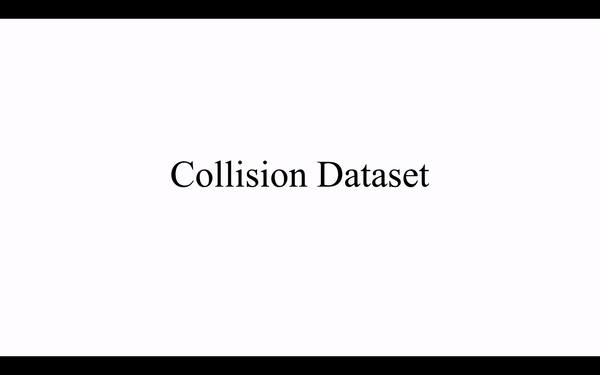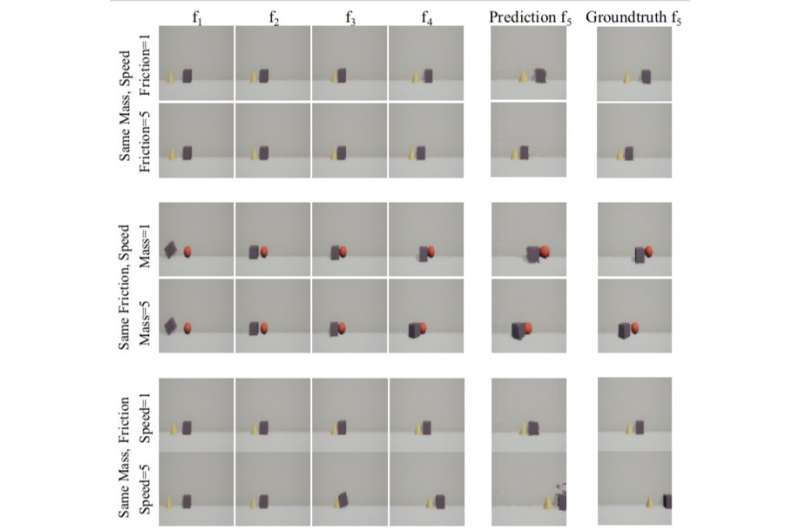September 12, 2018 feature
An intuitive physics model to predict the effects of a collision

Humans have the innate ability to predict the effect of collisions, merely using their common sense. In many cases, humans can even predict the results of similar collisions in situations in which mass, friction, or other factors vary. Could machines also attain a similar capability?
Researchers at Carnegie Mellon University's Robotics Institute and at Third Wave Automation have recently created an interpretable intuitive physics model to predict the effects of collisions. Their machine learning-based model, presented in a paper pre-published on arXiv, was found to generalize well, even in situations in which similar scenes are simulated with different underlying properties.
"When a collision occurs, we humans can infer the underlying physics and use this information to predict the effect of the collision," Xiaolong Wang, one of the researchers who carried out the study, told TechXplore. "For example, we can predict that a sphere will bounce back when it's colliding with a heavier box, while the sphere will keep moving if it is colliding with a lighter object. Inspired by this, we designed an intuitive physics model which can understand the physical properties (friction, mass and speed) of the objects by watching videos of object collisions, helping to better predict the results of collisions."
In the intuitive physics model developed by Wang and his colleagues, specific dimensions in the bottleneck layers of the convolutional neural network (CNN) correspond to different physical properties. As these properties often depend on one another or are connected, the researchers also introduced a training curriculum and a generalized loss function, which was found to outperform baseline approaches.

"Our model is an encoder-decoder structure convolutional neural network," Wang explained. "The inputs for the model are the video frames before the collision happens and the moment of the collision. The model will generate the disentangled representations of the mass, friction and speed of the objects. These physical representations are then decoded to predict the future frame after collisions."
In evaluations carried out by the researchers, the model was found to generalize well across scenes with different underlying physical properties or in which objects had different shapes. In addition, it was able to effectively predict the future in instances in which the physical environment changed.
"Learning an interpretable physics model allows us to gain a better understanding of neural networks," Wang said. "Instead of looking at a black box neural network, we can now manipulate and control the network representations to generate the prediction results we want."
The study carried out by Wang and his colleagues offers a glimpse of just how far neural networks could go in replicating innate human capabilities. In future, their model could have a number of interesting applications within real-life scenarios, predicting the results of collisions between real objects in space.
"Our work is based on simulations, so we are now trying to adapt our method to the real world," Wang said. "By going into the physical world, we also allow humans or robots to actively interact with the objects to understand the physics."
More information: Interpretable Intuitive Physics Model. arXiv:1808.10002 [cs.CV]. arxiv.org/abs/1808.10002
© 2018 Tech Xplore




















